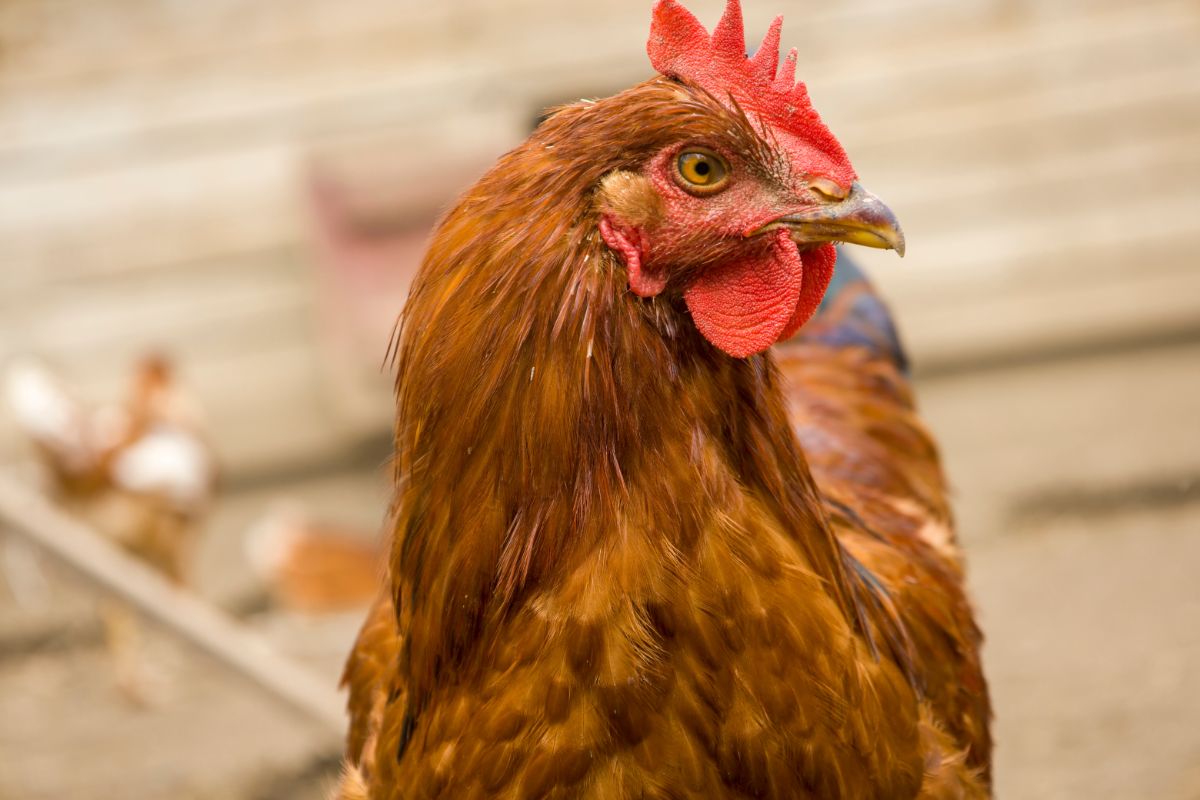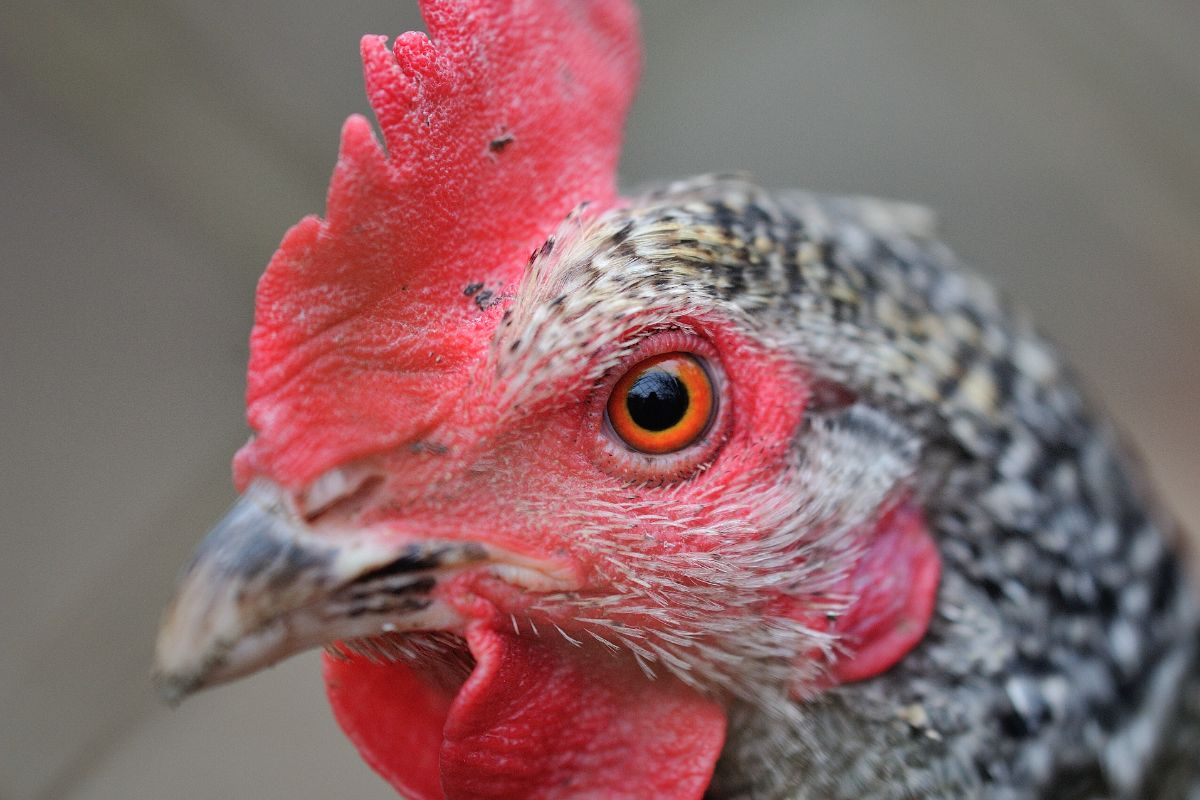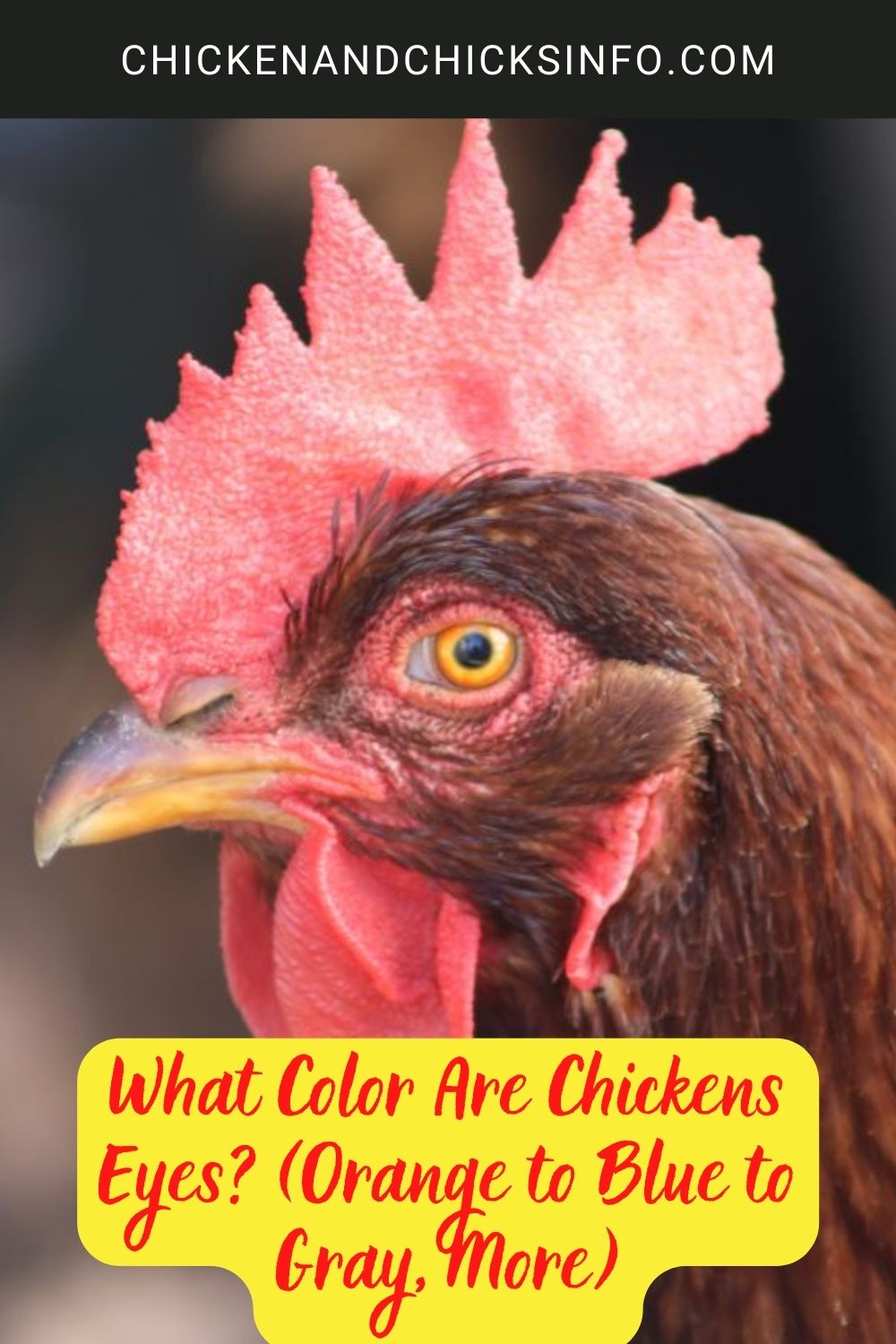
Most chickens’ eyes are shades of orange, brown, or yellow eyes. Chickens can also have black eyes, most notably when they’re chicks, as well as gold, red, and brown as they age, as well as pink eyes for albinos.
There’s more than meets the eye to chicken’s eyes and how their vision works. It’s an interesting topic, and I’m excited to help you explore it in this post!
Jump to:
Are Chickens Eyes Full Color?
Chickens have full color eyes and see in color similar to how we do, but their eyes and vision are very different from ours in other ways.
Our eyes have three cones; blue, green, and red. Chicken’s eyes have these three cones, as well as an ultraviolet light (UV) cone.
This extra cone gives them the ability to see a much wider and broader range of colors and shades than we can.
A chicken’s eye is perfectly designed to help them find little bugs, fruits, seeds, and other edible things from a good distance away.
Can Chickens Have Gray Eyes?

Healthy chickens do not have gray eyes naturally.
If a chicken does have a gray eye, according to ScienceDirect this is almost certainly an indication that the chicken has a manifestation of lymphomatosis.
Don’t confuse this with a young chick having grayish eyes though. Young chicks’ eyes will often look gray, but their eyes will change color as they mature.
It’s when an older bird’s eye starts to show a cast of gray and has visibly changed color that you should investigate further.
In addition to lymphomatosis, a chicken’s eye changing color can also indicate Marek’s disease, blindness, and other health concerns.
Please don’t jump to any conclusions, consult with an avian vet for a professional opinion.
Are There Blue Eyed Chickens?
Blue eyes are something of a controversy in the backyard chicken community.
Generally speaking, chickens should not have blue eyes. I’ve seen many pictures of owners proudly showing off their birds with blue eyes, but it’s not what it may seem.
First of all, it’s possible that a chicken can have a blue - or a bluish-looking eye - due to a mutation.
All kinds of wonderful things can happen due to mutations, but that doesn’t mean that chickens can have blue eyes in their genetic line.
Also, a lot of the pictures I viewed of chicken owners proudly saying their chickens have blue eyes looked more grayish to me.
As discussed above, chickens’ eyes can turn a wide range of shades of gray if they’re suffering from an underlying health condition.
If your chickens’ eyes have changed color at all, I’d get them checked out. Shades of gray and blue can often be confused.
Related - Do chickens have eyebrows and eyelashes? Find out!
8 Interesting Facts About Chickens’ Eyes

Just about everything to do with chickens is fascinating, and their eyes are no different.
Here are some of the most interesting - and sometimes surprising - facts about chickens’ eyes that you may want to use to impress your friends!
1. Chickens Have Three Eyelids
Chickens have a third eyelid called the nictitating membrane. This is common in the animal kingdom, it enables them to clean their eyes as they can’t use their hands to do so as we do.
Related - More on how many eyelids chickens have.
2. Chickens Have Monovision
This study explains how chickens can use their monovision. This means each of their eyes are a different strength; their left eye is far-sighted, and their right eye is nearsighted.
3. Chickens Have a Much Wider Field of Vision
Chickens have a 300-degree field of vision, which compared to our 180 degrees means they have a much broader field of vision.
4. Chickens Can Use Each Eye Independently
Along with their broader field of vision, chickens can also move each of their eyes independently. This is known as monocular vision and helps them keep an eye (or both eyes) out!
5. Chickens Have Huge Eyes!
Saying they have huge eyes is stating the obvious, but to put it into perspective; chickens’ eyes make up about 10% of their overall head mass while ours make up about 1% of ours.
6. Chickens Can Sleep With One Eye Open
Chickens are able to sleep with one eye open. This is an evolutionary adaptation that enables them to literally keep an eye out for predators while they’re sleeping.
7. Chickens Are Tetrachromatic
You’re forgiven for not knowing what tetrachromatic means. Tetrachromatic is the technical term for having the 4 types of cones that chickens have enabling them to see such a wide range of colors.
8. Chickens Have a ‘Third Eye'
OK, not quite a third eye, but chickens have a pineal gland which is also referred to as a third eye that plays an important role in regulating their body clock and even stimulating the production of eggs.
In Summary
Adult chickens’ eye colors are yellow, gold, orange, brown, and red. Baby chicks have black eyes until they mature, and albino chickens have pink eyes.
It’s not just the color of a chicken’s eyes that are interesting, you now know a number of other unique and fascinating things about how chickens’ eyes work.
Resources
Normal Eye Color in the Chicken - ScienceDirect.com





